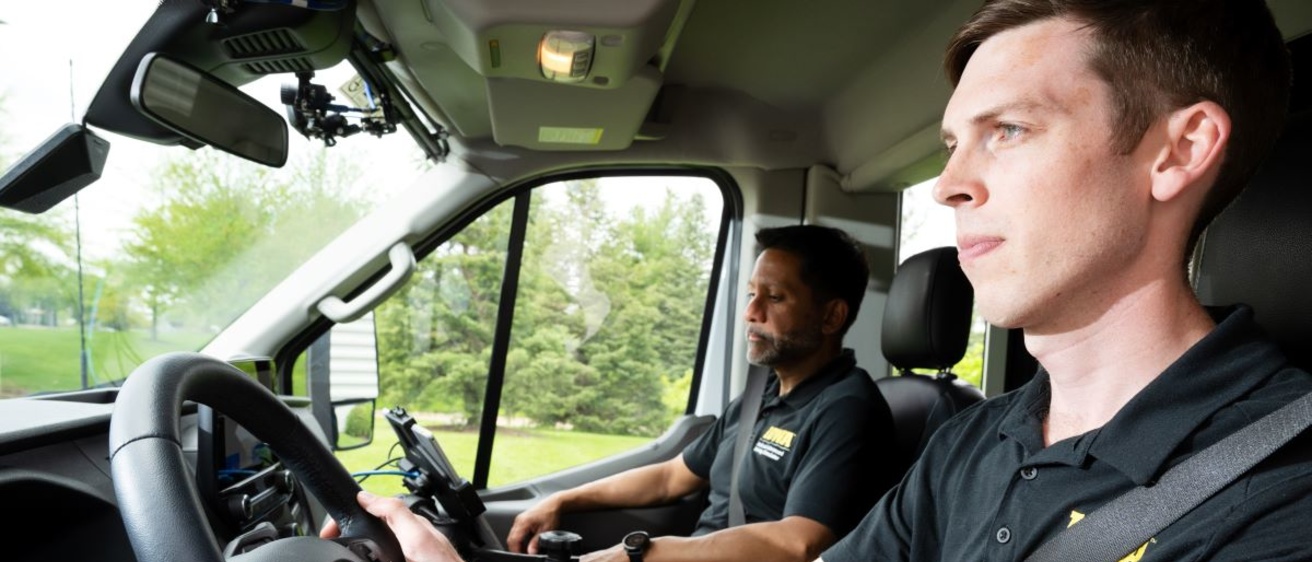The University of Iowa Driving Safety Research Institute is leading the way in testing a highly automated vehicle on unmarked and gravel roads, in winter weather, and at highway speeds.
The unique characteristics of rural roads make them more dangerous than urban roads: unpaved surfaces with no lines, sharp curves, the presence of farm equipment, etc. While 19% of Americans live in rural areas, nearly 50% of traffic fatalities occur on rural roads.
This is why automated vehicles (AVs) need to be tested in rural areas, not just in large cities: to find out where the technology works well and—more importantly—where and why it doesn’t.
“As part of the U.S. ADS Demonstration Grant program, we’re the first to take on this challenge in rural America and provide a public data set to show where the technology needs to improve before widespread implementation can even be considered,” explained Omar Ahmad, project manager of the Automated Driving Systems (ADS) for Rural America project. Ultimately, the project—funded by the U.S. Department of Transportation—aims to represent rural areas and facilitate the development of AV technology for all road types.
Alec La Velle, a University of Iowa industrial engineering alum and now a staff design engineer, is one of the team’s three safety drivers. “My job is to monitor the system’s automation to provide a safe and comfortable ride, while looking out for any situations where the automation may have issues so I can take over manual control of the vehicle,” he explained.
A few key findings of the project have included:
- The automation does not change how it drives when the weather is poor, and precipitation buildup can blind the sensors.
- Narrow gravel roads with loose shoulders pose a challenge for AVs as they drive in the right lane vs. drive down the center, as is typical of human drivers.
- The vehicle may not be able to classify all hazards and will slow for non-threatening objects such as dust clouds.
- The vehicle’s sensors may not “see” far enough to safely turn onto a highway where traffic is moving at 55+ mph.
Situations like these make it essential for the safety drivers to have intimate knowledge of the system’s limitations. “After countless hours of test drives, I’ve developed an understanding of how the automation behaves so that I can predict the need to intervene and avoid any potentially hazardous situations,” La Velle added.
Next to the safety driver sits the co-pilot, who acts as a second set of eyes, monitors the system status, and can input data flags when something noteworthy occurs. The project has also recruited local riders to gather data on their perceptions of the technology.
“Despite these challenges, overall we’ve shown that the technology shows great promise in rural areas and that there is a thirst for this technology, especially from those who have limited transportation options,” said Ahmad.
A new name for driving research at the University of Iowa
The University of Iowa National Advanced Driving Simulator (NADS) has been renamed to the University of Iowa Driving Safety Research Institute (DSRI) to better reflect the unit’s established expertise in driving simulation and emerging work in on-road driving research.
“We’ve been doing on-road research for more than 15 years, and we collaborate with virtually every college on campus, so it’s time we carry a name that better represents our interdisciplinary capabilities and broader mission of safer roads for all,” said Dan McGehee, director of DSRI and associate professor of industrial and systems engineering, emergency medicine, public health, and public policy.
As part of the UI College of Engineering, NADS obtained more than $27 million in funding over the past decade for on-road research studies alone, not including simulator studies.Throughout its history, its research has been entirely self-funded through competitive contracts with the government, industry, and foundations. “We hope this new name will also help expand access to funding opportunities by clearing up any misperceptions that we only do simulation,” added McGehee.
